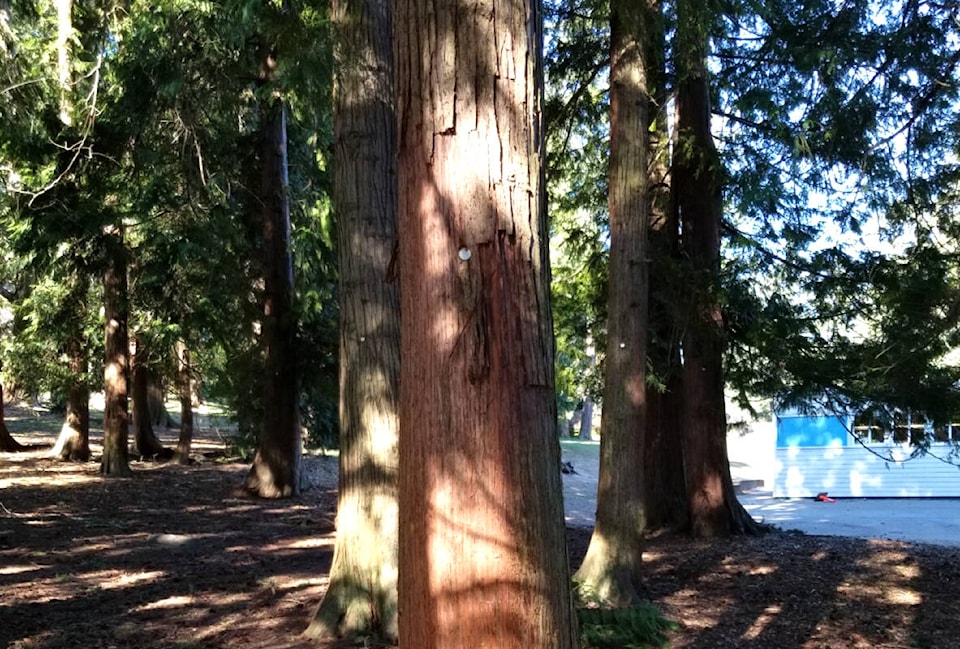Numerous western red cedar trees at Frank Hobbs Elementary School in Saanich have had bark stripped off over the past year.
Although this is a common traditional practice among Indigenous peoples, Saanich police are hoping to rule out vandalism as a potential cause.
School maintenance staff have reported large chunks of bark removed from trees, which Saanich police began investigating on Feb. 23, said Const. Markus Anastasiades. Staff and police are concerned the removal of too much material could impact the stability of the trees and create a safety hazard for students and others.
While the who and why of the bark stripping remains a mystery, J.B. (John-Bradley) Williams, an ethnobotanist of Tsawout and Ahousat descent, said it is possible the bark is being harvested by cedar weavers within the community for use in baskets, hats, bracelets, headbands and cedar roses.
ALSO READ: Indigenous ethnobotanist dedicated to preserving traditional plant knowledge in Greater Victoria
“This has been a part of our culture since time immemorial,” he said. “It is harvested in a way that it doesn’t damage the tree – we take one quarter to one-third of the circumference, and if we stay within that small amount, the tree will survive.”
There are trees over 300 years old that have had their bark harvested and they’re still alive and healthy, Williams added.
“We’re allowed to practise our traditional rights – if it’s just a small strip of the tree that’s been taken, there should be no concern for the tree’s health – we know what we’re doing and we’re far more educated than our visitors give us credit for.”
A blog published by Indigenous Corporate Training, a company that teaches non-Indigenous people about culture and traditions, refers to trees used for harvesting purposes as culturally modified trees (CMTs) and notes bark is collected in a sustainable fashion that does not damage the tree. Such harvesting techniques have been passed down through generations, with the most commonly modified tree western red and yellow cedars, the blog states. CMTs are recognizable by the scars remaining from the removal of bark.
Anyone with further information about the stripped trees at Frank Hobbs elementary is asked to contact the Saanich Police Department at 250-475-4321.
Do you have a story tip? Email: megan.atkinsbaker@saanichnews.com.
Follow us on Twitter and Instagram, and like us on Facebook.
vnc.editorial@blackpress.ca
